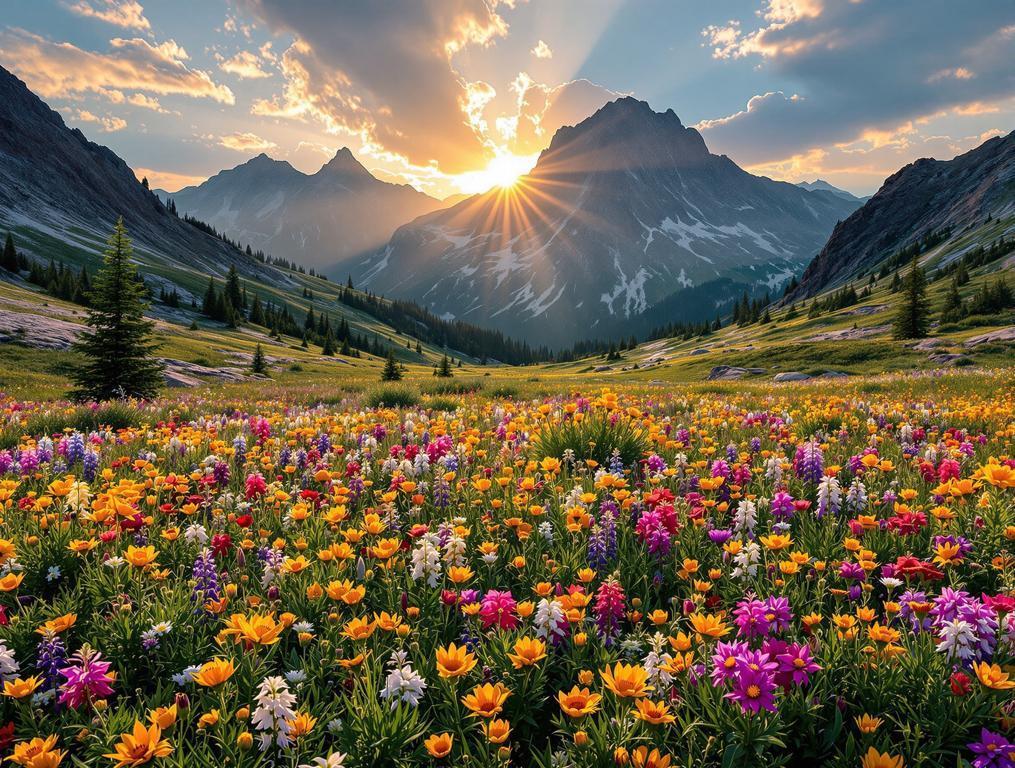I’m standing at 8,909 feet elevation on Elk Avenue, the Victorian-era main street of Crested Butte, Colorado, watching an extraordinary transformation unfold. The tiny town of just 1,658 residents is preparing for an influx that will multiply its population nearly tenfold. Hikers in technical gear consult trail maps outside coffee shops while photographers adjust equipment on benches beneath historic facades.
The reason? This remote mountain community, tucked 230 miles southwest of Denver, is days away from its most spectacular natural event. Fields surrounding town are beginning to erupt in a rainbow of wildflowers so vibrant that locals have nicknamed the phenomenon “Nature’s Fireworks.” And unlike many mountain destinations that hibernate in summer, Crested Butte is about to have its moment.
The Hidden Wildflower Capital Exploding in Color
Crested Butte officially holds the title of “Wildflower Capital of Colorado” – a designation earned through its exceptional diversity of alpine blooms. By mid-July, over 114 wildflower species will carpet the surrounding meadows and mountainsides in a display that draws botanical enthusiasts from across the country.
The annual Crested Butte Wildflower Festival kicks off July 9th, running through July 18th this year. What makes this timing critical is the rare “triple bloom” phenomenon predicted by local botanists for 2025 – when alpine, meadow, and forest species flower simultaneously due to perfect snowmelt conditions.
“We’re seeing 14% higher spring rainfall this year compared to our ten-year average,” explains a researcher from the Rocky Mountain Biological Laboratory, which has monitored these patterns since 1928. This precise combination of late snow and warm rain has created ideal conditions for what many expect to be the most vibrant display in a decade.
The most spectacular showing is predicted for the Beckwith Pass trail system, where hikers will find fields so densely packed with columbine, Indian paintbrush, and alpine sunflowers that it’s often impossible to see bare ground. Local photographers tell me the best light occurs before 9am or after 5pm, when the low-angle sun turns meadows into glowing tapestries.
Authentic Mountain Town Without Aspen’s Crowds
Unlike its famous neighbor Aspen, located 102 miles northeast, Crested Butte has maintained its authentic character. While Aspen’s streets fill with luxury SUVs and designer boutiques, Elk Avenue preserves its 19th-century mining town charm with 30-40% of structures classified as historic.
“I’ve been coming to Colorado mountain towns for twenty years, and this is the only place that still feels real. You can chat with locals at the brewery, hike world-class trails without seeing another soul, and photograph wildflowers that would make National Geographic jealous – all without fighting crowds or paying resort prices.”
This authenticity extends beyond architecture. Local breweries like Irwin Brewing Company create small-batch ales using wildflower honey collected from nearby meadows. Artisans craft handmade goods in studios housed within former mining buildings, many offering workshops during the festival.
The economic impact of wildflower tourism follows patterns similar to those seen in other small towns where seasonal tourism provides critical revenue. Despite its small size, Crested Butte’s wildflower season creates a vital economic lifeline that sustains its year-round population.
Timing Your Visit for Maximum Bloom
The window for experiencing peak bloom is surprisingly narrow. Scientists monitoring conditions at the Rocky Mountain Biological Laboratory predict that July 12-24 will offer the most spectacular display, particularly for photography enthusiasts.
For first-time visitors, the 3.4-mile Upper Loop Trail provides accessible hiking with dramatic wildflower displays. Those seeking more immersive experiences should book guided hikes through the Wildflower Festival, which often access private land not otherwise open to the public.
Climate scientists monitoring these patterns note concerns similar to those documented in other mountain communities, where shifting precipitation threatens these natural cycles. This fragility makes this year’s exceptional bloom all the more precious.
As the afternoon light softens over fields of columbine and lupine, I’m reminded that timing is everything in mountain travel. Like a perfect wave for surfers or fresh powder for skiers, Crested Butte’s wildflower moment requires being in exactly the right place at precisely the right time. This fleeting spectacle, hidden in plain sight in the Colorado Rockies, might just be America’s most underappreciated natural wonder – but only for those who know when to look.
